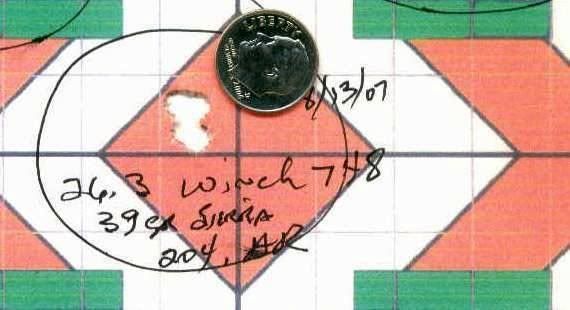Originally Posted By: KyleWoodsHere are my targets and primers:


From left to right: 26.2, 26.7, 26.9, 27.0, 27.1, 27.3, 27.4, 27.5, 27.7. No visible pressure signs.

Here is a close up of the extruded primers and punched primer:

I wasn't too concerned with the punched primer at 27.7 because that's a max load and I more than likely wasn't going to run something that hot, but then I punched a primer at 27.1, this is deterring me from working up a hotter load than 26.2 especially because it is grouping well. If I stick with 26.2 gr of H4895, am I going to see a significant difference in performance (on groundhogs) out to 400-500 yards than I would if I ran a hotter load? Basically I'm asking if I should go back and try this again even though I punched primers? I have OCD as I'm sure a lot of you do and I'm also a perfectionist. I sometimes annoy myself because everything I do has to be perfect no matter what it is so understandably I really hate the idea that I'm leaving more performance on the table, but I also don't want to run a potentially unsafe load.
Do you have any velocities to go with the groups? 26.7 - 27.1 seem to be consistent in the vertical aspect but velocities would help verify this. I would not focus on one group to determine next step. A lot of times that tune window can be very small and slight changes like a tenth of a grain of powder high or low can put you out of the tune window and this is why velocities or paying attention to the vertical grouping on each side of the good group is a good indicator of a good powder node. Some will say its hard to determine vertical at 100 yards but with careful study and practice it can be done. Without velocities its a lot of trial and error but can still be done.








